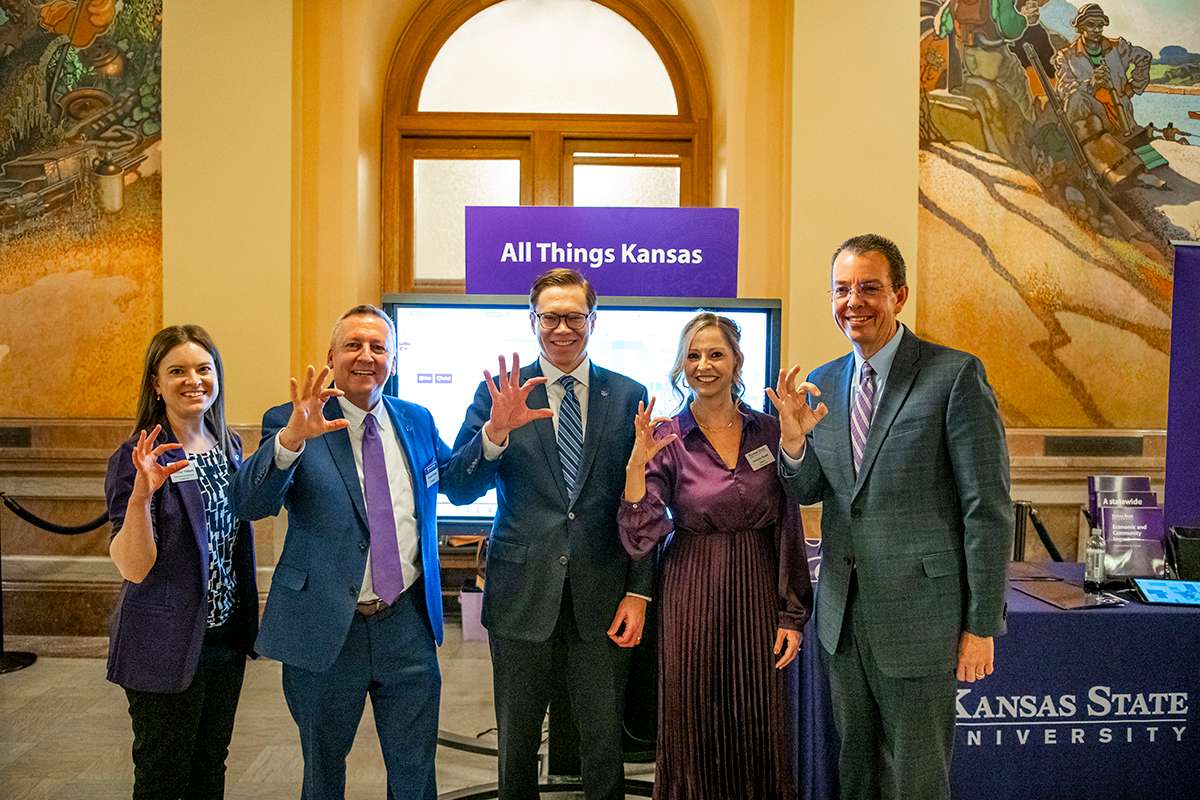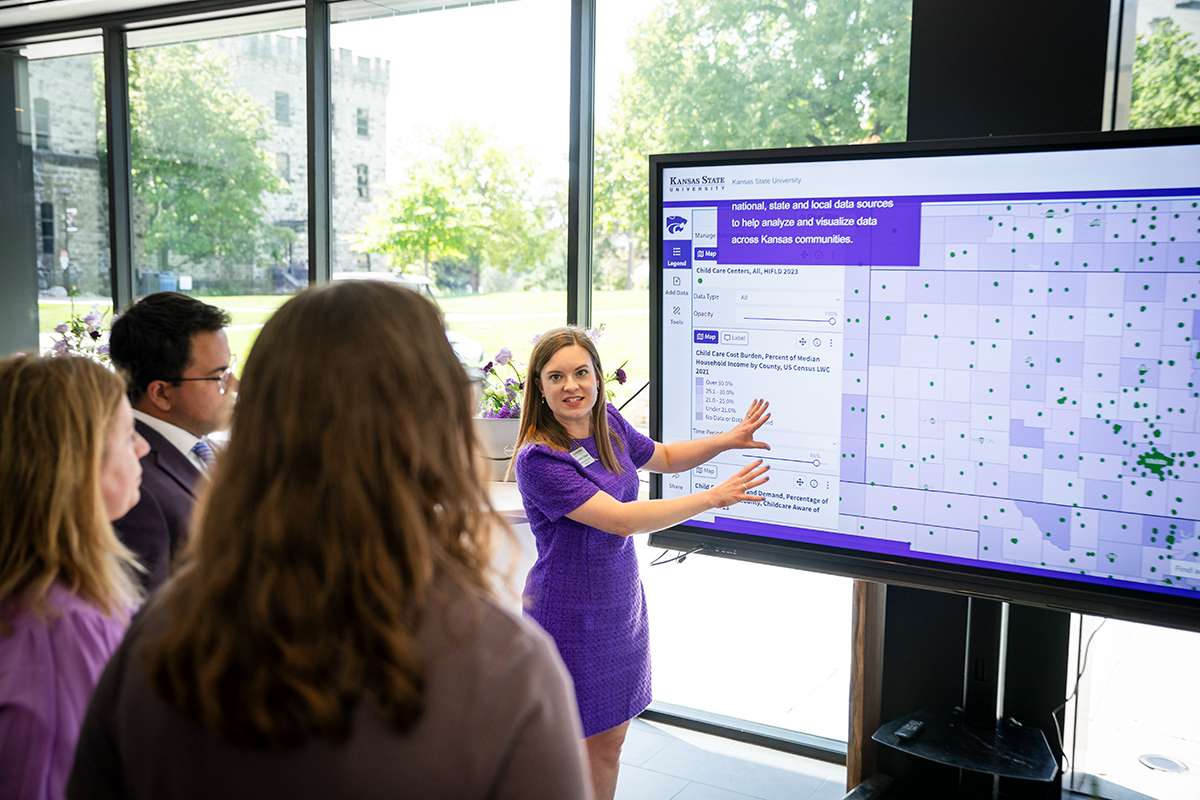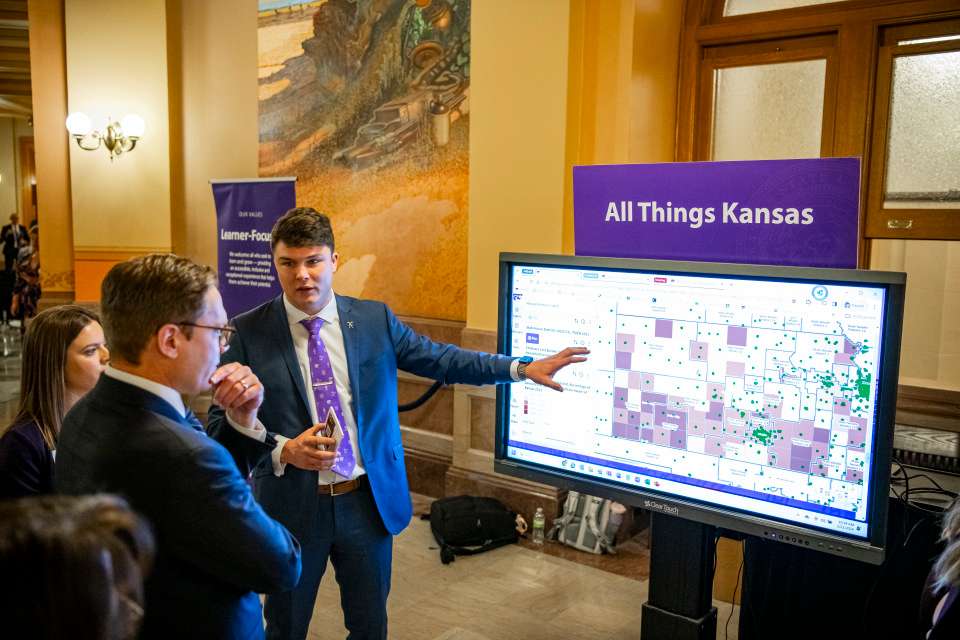
By: EMILY BORAGINE
Kansas State University
Across Kansas, individuals, businesses and communities are navigating a rapidly changing world. Whether searching for child care options, broadband access or economic development opportunities, Kansans need resources they can trust and tools that meet them where they are.
All Things Kansas, an online platform developed by Kansas State University, is helping residents, business owners and local leaders make more informed decisions — faster.
The site serves as a centralized hub for county-specific data. It highlights everything from demographic and health statistics to workforce insights, education levels and infrastructure access.
The real value of All Things Kansas goes beyond numbers and charts.
"This isn't a top-down data tool — it was built with Kansans, for Kansans," said Jessica Gnad, K-State's director of Economic Development. "We work with K-State Extension, our academic experts, and community leaders to ensure it reflects needs and real use cases across the state."
A dynamic snapshot of Kansas
At its core, All Things Kansas is a free interactive website that offers a county-by-county overview of key indicators affecting local growth and quality of life.
The platform includes intuitive graphics and easy-to-navigate dashboards powered by publicly available datasets. Users can explore and compare population trends, educational attainment, workforce participation, income levels and more across all 105 counties.
For Jennifer Tidball, communications director for K-State Economic Development, the tool exemplifies the university's mission of making data accessible.
"All Things Kansas has access to more than 34,000 data layers from more than 120 state and national sources," Tidball said. "You could go to several different websites and find all this content yourself, but this tool saves people time by making it a one-stop shop."
The platform's design supports the university's Next-Gen K-State strategic plan and reflects its commitment to advancing community vitality through engagement and innovation.

From small towns to statewide solutions
One of the platform's greatest strengths is its ability to lower the barrier of entry for users, said Greg Erickson, enterprise business intelligence and data analyst in K-State's Office of the President.
"All Things Kansas takes data that might require multiple searches across different databases and makes it as simple as typing into a search box, just like you would on Google," he said.
For the Clay Center native, the project's impact is personal.
"It just seemed like a really good project to try to get involved with," Erickson, a Clay Center native, said. "There's a shared desire to help people, help our neighbors."
This ease of use opens the door to a wide range of users—from policymakers and entrepreneurs to nonprofit leaders and grant writers.
"This data tool is now a part of the conversation when Kansans walk into congressional offices," Gnad said. "It gives decision-makers a clearer view of local challenges and opportunities — and that helps tell a more complete story of our state's economic potential."

Designed to evolve
All Things Kansas is not a static site. It's a living platform, built to grow alongside the state it serves.
Community visits and user feedback have shaped new features, added data layers and guided ongoing development, Tidball said.
"Every time we go out to communities and do demo sessions, people say, 'Hey, we have great data we'd love to add,'" Tidball said. "And we do."
Thanks to its collaborative infrastructure with the University of Missouri's Center for Applied Research and Engagement Systems, the site is updated regularly with the most current data available. K-State's team works with partners like Child Care Aware of Kansas and the Kansas Health Institute to visualize local challenges and opportunities.
"It's about helping Kansans make better decisions," Tidball said. "Whether you're expanding your business, applying for a grant or trying to understand broadband gaps, we want this tool to give you clarity."
The platform's flexibility makes it a valuable resource for entrepreneurs and small business owners. Tidball shared an example of how users can explore population trends, workforce statistics, housing markets and infrastructure to identify the best location for a new business or support an expansion.
"We even have a map that shows business births and deaths over time," she said. "It gives you an economic snapshot of what's happening in the state."
Visualization leading action
While traditional spreadsheets may leave users overwhelmed, All Things Kansas turns complex information into interactive visuals. It includes maps, dashboards and downloadable reports that are easy to use and share.
"People don't just want access to data — they want help making sense of it," Gnad said. "Our job is to turn information into action, so that Kansans can use it to grow businesses, strengthen local communities and plan for the future."
Grant writers are among the platform's most active users. According to Tidball, the ability to export custom maps and compare county reports side by side is especially powerful for rural leaders who often juggle multiple responsibilities.
"If you're one economic development director covering a whole region, you may not have time to create graphics for every grant," Tidball said. "This tool does it for you."
A tool built for Kansas, by Kansans
Beyond individual use, All Things Kansas is fostering a sense of connection across Kansas. When demonstrating the platform across Kansas, Tidball said she has seen it spark moments of community recognition and pride.
"You show a map and people say, 'Yes, that's what we're experiencing,'" she said. "It empowers them to be solution-oriented and connect with other communities doing well in that area."
And the more Kansans who use it, the more powerful the platform becomes.
"It's free. It's current. And it's built to keep growing," Tidball said. "Because when Kansans have access to the right information, we all make better decisions."
Through its many layers of customizable and comparable data, All Things Kansas doesn't just highlight challenges, Gnad said.
It points to opportunities.
"It confirms the best parts of your community or challenges assumptions," Gnad said. "It helps Kansans see themselves more clearly and see each other."
Whether helping a business owner explore new markets, assisting a policymaker in identifying broadband gaps or giving a parent insights into child care supply, All Things Kansas offers a unifying solution across a diverse state.
"This is K-State showing up in those spaces to be agile and responsive to the needs of Kansans," Gnad said. "We're creating another tool in our land-grant university toolbox as we bring K-State expertise and resources directly to Kansas communities."





